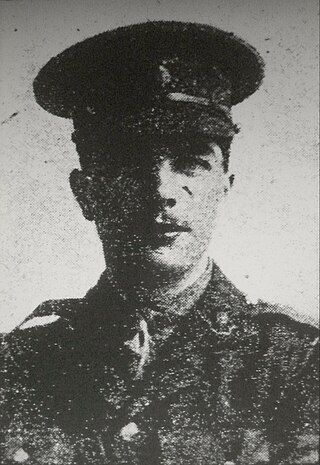Related Research Articles

Earl of Cromartie is a title that has been created twice, both for members of the Mackenzie family. It was first created as Earl of Cromarty in the Peerage of Scotland in 1703 for Sir George Mackenzie, 2nd Baronet, but his titles were forfeited after the Jacobite rising of 1745. It was recreated in 1861 in the Peerage of the United Kingdom for Anne Sutherland-Leveson-Gower, Duchess of Sutherland. Since 1979, the Earl of Cromartie has been chief of Clan Mackenzie.

Field Marshal Philip Walhouse Chetwode, 1st Baron Chetwode, 7th Baronet of Oakley,, was a senior British Army officer. He saw action during the Second Boer War, during which he was present at the Siege of Ladysmith in December 1899. He saw action again during World War I on the Western Front, taking part in the First Battle of Ypres, and then in the Sinai and Palestine campaign during which he led his corps at the First Battle of Gaza in March 1917, at the Battle of Beersheba in October 1917 and the Battle of Jerusalem in November 1917.

General Sir Harry Burrard, 1st Baronet was a British soldier who fought in the American War of Independence, the French Revolutionary Wars and in the Peninsular War.

Brigadier-General Sir Dalrymple Arbuthnot, 5th Baronet, CMG, DSO, JP was a British baronet and Army officer.

(James) Ian Stewart Macpherson, 1st Baron Strathcarron, known as Sir Ian Macpherson, 1st Baronet, between 1933 and 1936, was a British lawyer and Liberal politician. In 1931 he joined the breakway National Liberal Party.
Major-General Algernon Philip Yorke Langhorne, CB, DSO, MC was an officer in the British Army.
Sir George Andrew Dick Lauder, 12th Baronet of the Fountainhall creation, was a British author and soldier.
Sir John Dick Lauder of Fountainhall, 8th Baronet was a deputy lieutenant and magistrate for Midlothian, and justice of the peace for Wigtownshire. He succeeded his father, Sir Thomas Dick Lauder, 7th Baronet, in 1848.
There have been six baronetcies created for persons with the surname Brooke, one in the Baronetage of England, one in the Baronetage of Ireland and four in the Baronetage of the United Kingdom. As of 2015 four of the creations are extant, though one has been subsumed into a peerage.
Three baronetcies were created for persons with the surname D'Oyly, two in the Baronetage of England and one in the Baronetage of the United Kingdom. One creation is extant as of 2008.

General Sir William Eliot Peyton, was a British Army officer who served as Military Secretary to the British Expeditionary Force from 1916 to 1918. He was Delhi Herald of Arms Extraordinary at the time of the Delhi Durbar of 1911.
General Sir Alan Fleming Hartley, was a British Indian Army officer during the Second World War.

Sir George Francis Osborne, 16th Baronet, was an Anglo-Irish baronet and British Army officer. He was decorated for gallantry during the First World War.
Lieutenant General Sir Hew Dalrymple Fanshawe, was a British Army general of the First World War, who commanded V Corps on the Western Front and the 18th Indian Division in the Mesopotamian campaign. He was one of three brothers who all rose to command divisions or corps during the war.
General Sir George Alexander Weir was a British Army officer who served in the Second Boer War and the First World War.
Major General Thomas Tait Pitman, was a British cavalry officer, who was a general officer during the First World War.
Brigadier General Archibald Stirling, DL, of Keir and Cawdor was an officer of the British Army who also served as a Member of Parliament.
Colonel Sir George Murray Home Stirling, 9th Baronet CBE DSO was a Scottish British Army officer who was Lord Lieutenant of Stirlingshire from 1936 until 1949.

Colonel Sir Bruce Gordon Seton, 9th Baronet, was a Scottish military surgeon and historian.
Lieutenant-General Sir Herbert Campbell Holman was a British officer of the Indian Army who served mostly in staff appointments.
References
- ↑ "No. 27517". The London Gazette . 20 January 1903. p. 390.
- ↑ Quarterly Army List March 1922
- ↑ Indian Army List supplement January 1930
- ↑ Supplement to the Indian Army List January 1939
- ↑ Profile at thepeerage.com.
- Debrett's Baronetage, London, 1971.
- Burke's Peerage & Baronetage, 106th edition.
- The Malvern Register (1865–1904), 1905, p. 404.
- Profile at thepeerage.com.